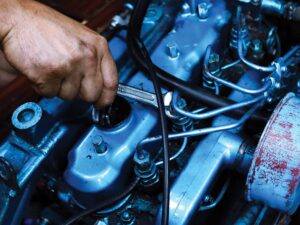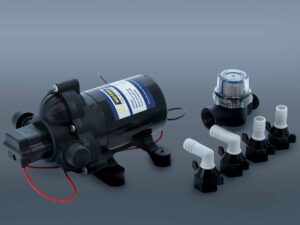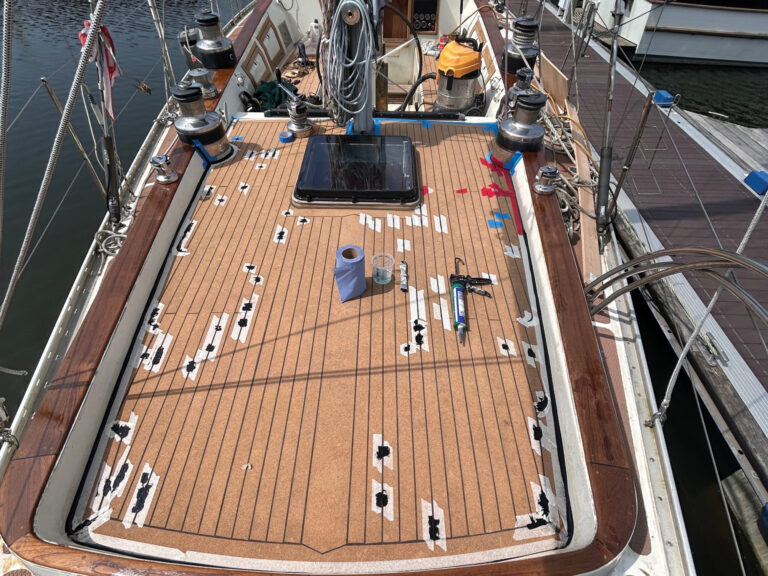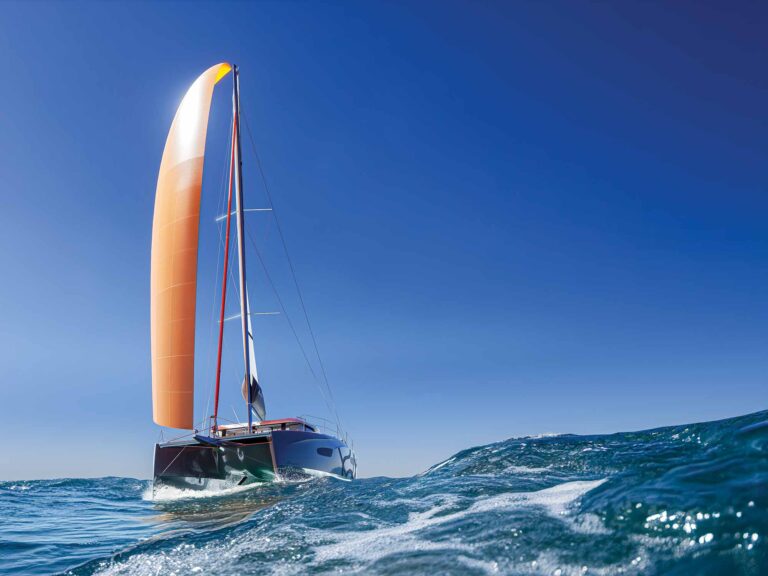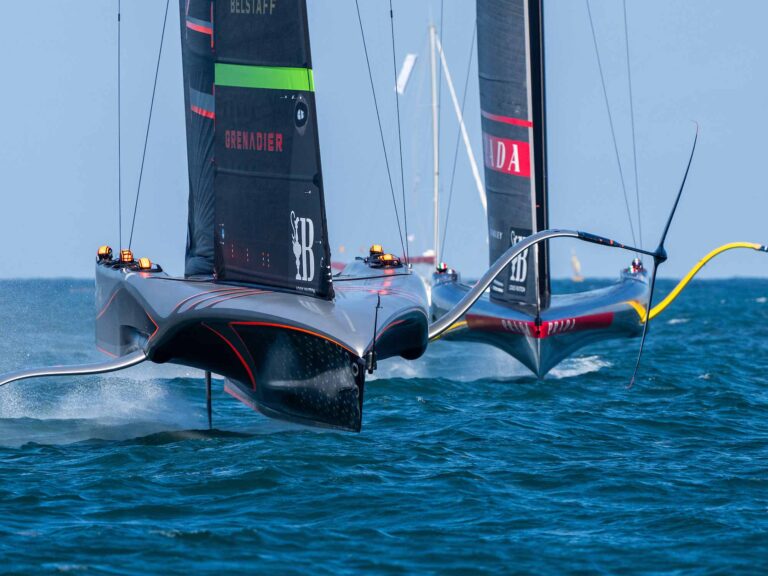
In marinas, it’s common to see freshwater hoses connected to boats—especially liveaboards. A hose runs from a dockside faucet to a pressure-reducing inlet on the boat, typically lowering municipal water pressure from around 60 psi to 35 psi. This allows consistent water pressure at all onboard faucets without relying on noisy pressure pumps. It also means no battery drain, as well as fresh water straight from shore.
The downside? If a hose or fitting fails, the uninterrupted water flow can flood—and sink—a boat.
On my schooner, Britannia, the original shore-water system had no fail-safe. The plastic pipes dated back to the boat’s construction in 1978 and ran in a confusing tangle deep in the bilge. My Downeast 45 has an unusually deep and long bilge—53 inches from the salon sole to the keelson, and 27 feet long. To access it, I had to build a wooden ladder. Inside this cavernous space: the Perkins main engine, a Kubota diesel generator, a 22-gallon water heater, 10 batteries, eight electric pumps—and that snarl of old plumbing. Fixing leaks was always a contortionist’s job.
When a pipe fractured, the automatic bilge pump would kick on, and I’d have to scramble outside to shut off the dockside water. I made it a habit to turn off the supply whenever I left the boat—disconnecting the hose entirely for longer absences—but memory isn’t the most reliable safety system.
Some people suggested skipping shore water entirely and drawing from the tanks. While that avoids pressure-related flooding, a low-placed leak could still siphon water from the tanks, though probably not enough to sink the boat. Still, the comparison to shore power is fair—everyone leaves it plugged in for battery charging, and that has caused its share of fires.
My wife and I liked the convenience of shore water, especially on weekend stays. The challenge was making it as foolproof as possible. First step: new plumbing.
I found PEX piping at a local hardware store. It’s commonly used in homes and buildings. It’s flexible, color-coded and easy to connect, with no special tools required. The fittings are rated to 100 psi and don’t leak. I bought 100-foot coils of red and blue half-inch pipe for hot and cold water, and then taped them to the old lines to pull them through the boat. In areas where I could reroute them for better access, I did.
It took four days to replumb the entire system. The color coding and tidy connectors looked downright professional.
But that didn’t solve the bigger problem: automatic shut-off.
I found a 12-volt solenoid valve online. Normally open, it closes when powered. I installed it just after the inlet and wired it to the bilge float switch. When the bilge filled with water, the float activated the valve, cutting the flow. Simple, right?
Wrong. As soon as the bilge pump did its job and dropped the water level, the float turned off the power, reopening the valve and allowing water to pour in again. The cycle repeated.
After consulting an electrician friend, I installed a latching relay. Unlike a standard relay, it stays closed even after the triggering power shuts off. I can manually reset it with a contact breaker. Problem solved. I later added a bell to sound when the system trips—an effective high-water bilge alarm.
For additional peace of mind, I installed a manual shut-off at the boat’s inlet, in case someone on the dock turns the shared faucet back on while we’re away.
Feeling satisfied, I surveyed 20 boats in our marina with visible water hoses. I spoke with 12 owners. Not one had a safety system in place, and many had never considered the risk. All said they “always” remembered to turn off the water.
Maybe they’ll read this article.

